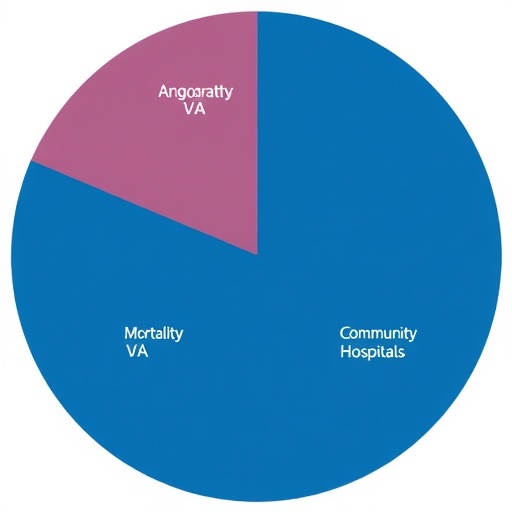The Pervasive Threat of Gambling Advertising to Canadian Youth: A Call for Urgent Legislative Action
In recent years, the landscape of gambling in Canada has undergone rapid and profound changes, with legal reforms and technological advancements converging to produce unprecedented exposure of young populations to gambling advertising. Embedded deep within televised sports broadcasts and seamlessly integrated into digital ecosystems, gambling promotions have become a normalized, almost invisible presence in the daily lives of children and adolescents. This normalization poses a growing public health concern, as mounting evidence links gambling exposure in minors to a spectrum of adverse outcomes, including addiction, mental health deterioration, and elevated suicide risk. An increasing chorus of experts and clinicians are ringing alarm bells, urging Canadian authorities to enact robust and scientifically informed legislation aimed at protecting youth from the insidious harms of gambling advertising.
Since 2021, the saturation of sports broadcasts with sports betting advertisements has unfolded at an alarming pace. These advertisements are designed with sophisticated marketing techniques that combine vivid imagery, celebrity endorsements, and interactive elements, making them especially attractive to impressionable viewers. The continuous presence of such ads during programming that attracts a significant number of minors effectively normalizes gambling as an integral part of sports spectating culture. This normalization subtly shifts perception among young audiences, embedding the notion that betting is an obligatory or natural extension of engaging with sports, thereby eroding any natural skepticism about the risks of gambling.
Scientific investigations dating back to before the widespread legalization of single-event sports betting in Canada reveal alarming tendencies in youth behavior. A 2019 survey targeting students from grades 7 to 12 found that approximately four percent reported a compulsive urge to gamble despite negative consequences, and two percent exhibited clinical symptoms consistent with gambling addiction. These figures underscore a predisposition among young people to develop problematic gambling behaviors in the absence of adequate protection and education, signaling a public health concern that is only intensified by the ubiquitous and youthful-friendly gambling advertisements.
The proliferation of smartphones and mobile applications further exacerbates the problem, transforming any handheld device into a potential gambling platform. The advent of legalized online gambling, or iGaming, in Ontario in 2022, represents a paradigm shift in accessibility. Smartphones now enable real-time betting opportunities that blend into everyday digital interactions on social media and gaming applications. This seamless integration complicates efforts to monitor and regulate youth gambling behavior, as opportunities to engage in betting are no longer confined to physical venues but are accessible anytime, anywhere, amplifying the risk of developing behavioral addictions associated with technology use.
Dr. Shannon Charlebois, medical editor at the Canadian Medical Association Journal, and Dr. Shawn Kelly, a pediatrician and addiction medicine specialist at the University of Ottawa and CHEO, articulate the synergistic impact of iGaming proliferation and pre-existing addictive tendencies toward technology and social media among youth. Their expert commentary highlights the convergence of two epidemics: gambling addiction and technology overuse, which combine to create a potent and disturbing public health challenge. The normalization and easy accessibility of gambling through digital devices create a fertile ground for the development of problematic gambling behaviors in minors, often masked by the social acceptance of technology use.
The clinical ramifications of youth problem gambling are profound and multifaceted. Epidemiological studies underline the stark associations between underage gambling and heightened risks for psychiatric and social adversities. Problematic gambling in minors correlates strongly with increased suicidal ideation and behaviors, substance use disorders, criminal activities such as theft, and engagement in violent behaviors involving weapons and assault. Of particular concern is data derived from a UK study revealing a ninefold increase in suicide risk among males and an almost fivefold increase among females with problematic gambling behaviors. Similarly, a longitudinal Norwegian cohort study spanning from 2008 to 2021 identified suicide as the leading cause of mortality among individuals classified with problem gambling, underscoring a critical intersection of mental health and behavioral addiction.
Current advertising practices represent not merely a lapse in regulatory control but a deliberate sacrifice of public welfare to private financial interests. The lucrative domain of sports betting generates significant revenue, incentivizing stakeholders to maintain or even amplify advertising exposure. This dynamic creates a moral and policy conundrum in which the future wellbeing of Canadian youth is effectively mortgaged to the short-term gains of industry profits and government tax revenues. The visible and persistent promotion of sports betting during media broadcasts accessible to minors constitutes a policy failure that urgently demands rectification.
In response to these challenges, the authors advocate for a comprehensive federal legislative framework that rigorously regulates gambling advertising, particularly during programming accessible to youth. Central to this effort is the expeditious advancement of Bill S-211 — a legislative measure intended to establish a national standard for regulating sports betting advertising and instituting protective measures for vulnerable populations. This bill represents a foundational step toward harmonizing provincial and national efforts and ensuring that the public health imperatives supersede commercial interests.
The science underpinning behavioral addiction provides critical insights into why protective regulations are necessary. Gambling addiction shares neurobiological pathways with substance use disorders and compulsive behaviors, involving reward system dysregulation, impulsivity, and impaired decision-making circuitry. Environmental cues such as vivid advertisements act as potent stimuli that trigger craving and reinforce addictive behaviors through conditioned responses. For minors, whose neurodevelopmental processes are ongoing, early exposure to such stimuli constitutes a risk factor for lifelong addiction trajectories.
Moreover, the intersectionality of gambling addiction with broader mental health conditions amplifies the complexity of prevention and treatment. Adolescents with predispositions toward depression, anxiety, or trauma-related disorders may find gambling to be a maladaptive coping mechanism, intensifying their psychological distress and complicating clinical management. The presence of gambling advertising in everyday media settings thus functionally acts as a catalyst for these comorbidities, making regulatory intervention not only a public policy necessity but also a clinical imperative.
Technological advances also present formidable challenges for enforcement and monitoring. Unlike traditional media, digital platforms employ personalized algorithms, micro-targeted advertisements, and interactive features that dynamically adapt marketing content based on user behavior and preferences. These factors render conventional regulatory models insufficient, necessitating innovative oversight mechanisms combining real-time data analytics, cross-sector collaboration, and youth engagement to effectively identify and mitigate harmful exposures.
The call for action extends beyond legislation into community education, healthcare infrastructure, and research. Empowering parents, educators, and healthcare providers with knowledge about the risks of gambling and the signs of early addiction is crucial for early intervention. Simultaneously, continued longitudinal research is required to evaluate the effectiveness of policy measures and to refine strategies that address emerging challenges in an evolving technological landscape.
In conclusion, the escalating exposure of Canadian youth to gambling advertising amid a context of evolving legislation and digital innovation constitutes a multifaceted public health crisis. Without urgent and decisive action, the normalization of gambling among minors threatens to foment widespread behavioral addictions with devastating social, clinical, and economic consequences. The federal government’s leadership in accelerating Bill S-211 and fostering a comprehensive national regulatory framework represents a critical juncture in safeguarding the mental health and future prospects of Canada’s younger generations. The evidence is unequivocal: protecting youth from gambling advertising is not a matter of political convenience but an ethical imperative grounded in science and humanity.
Subject of Research: People
Article Title: Protecting Canada’s youth from the risks of exposure to gambling advertising
News Publication Date: 8-Sep-2025
Web References: http://dx.doi.org/10.1503/cmaj.251227
Keywords: Behavioral addiction, Adolescents, Young people, Mental health, Suicide, Human behavior
Tags: addiction risks from gambling advertisingCanadian youth and gambling legislationgambling normalization in sports broadcastsimpact of gambling exposure on youthlegislative action against gambling adsmental health effects of gambling in adolescentsprotecting children from gambling marketingpublic health concerns of gambling exposureresponsible gambling advertising practicesrisks of sports betting for minorsstrategies for reducing youth gambling risksyouth gambling advertising Canada





